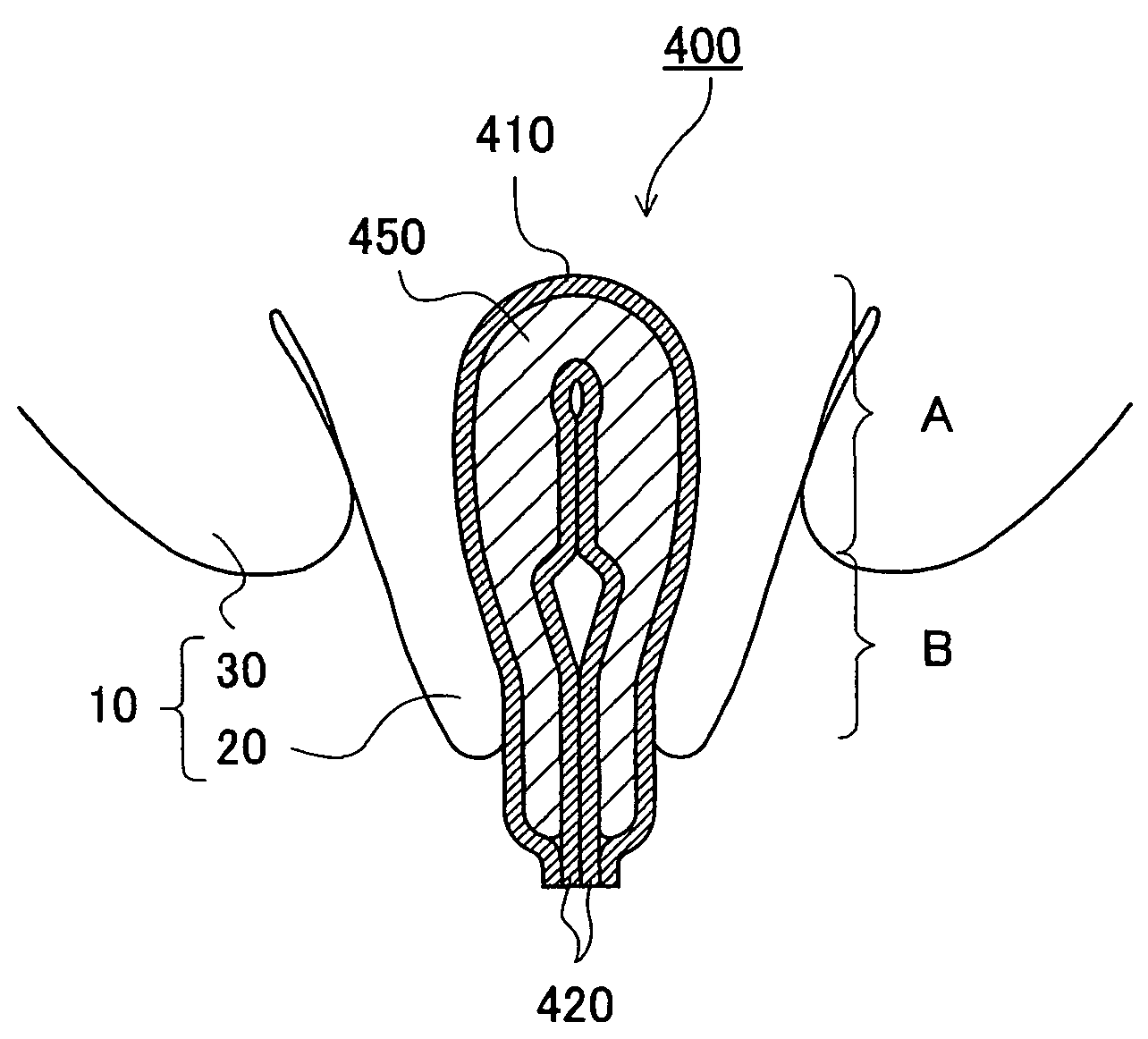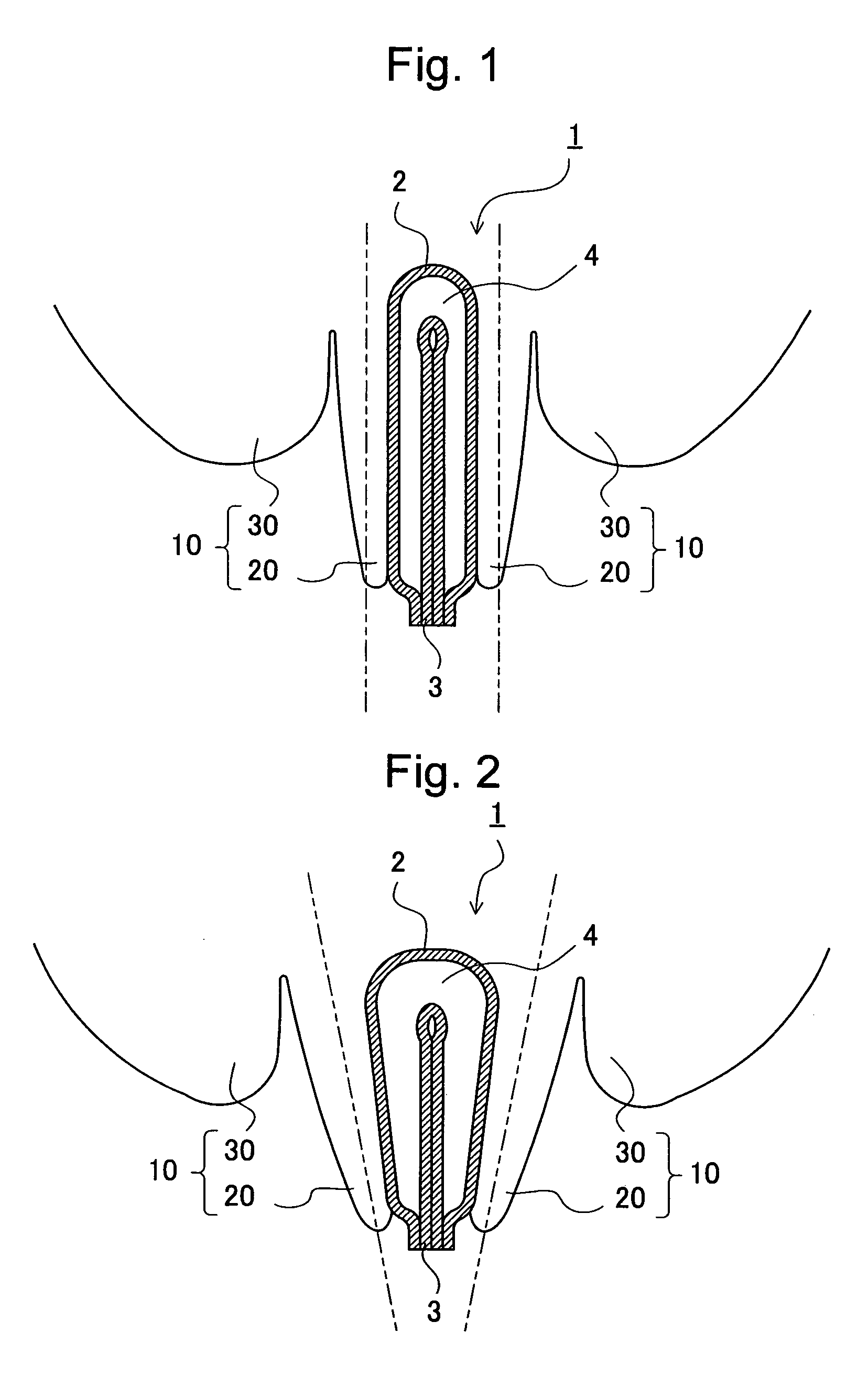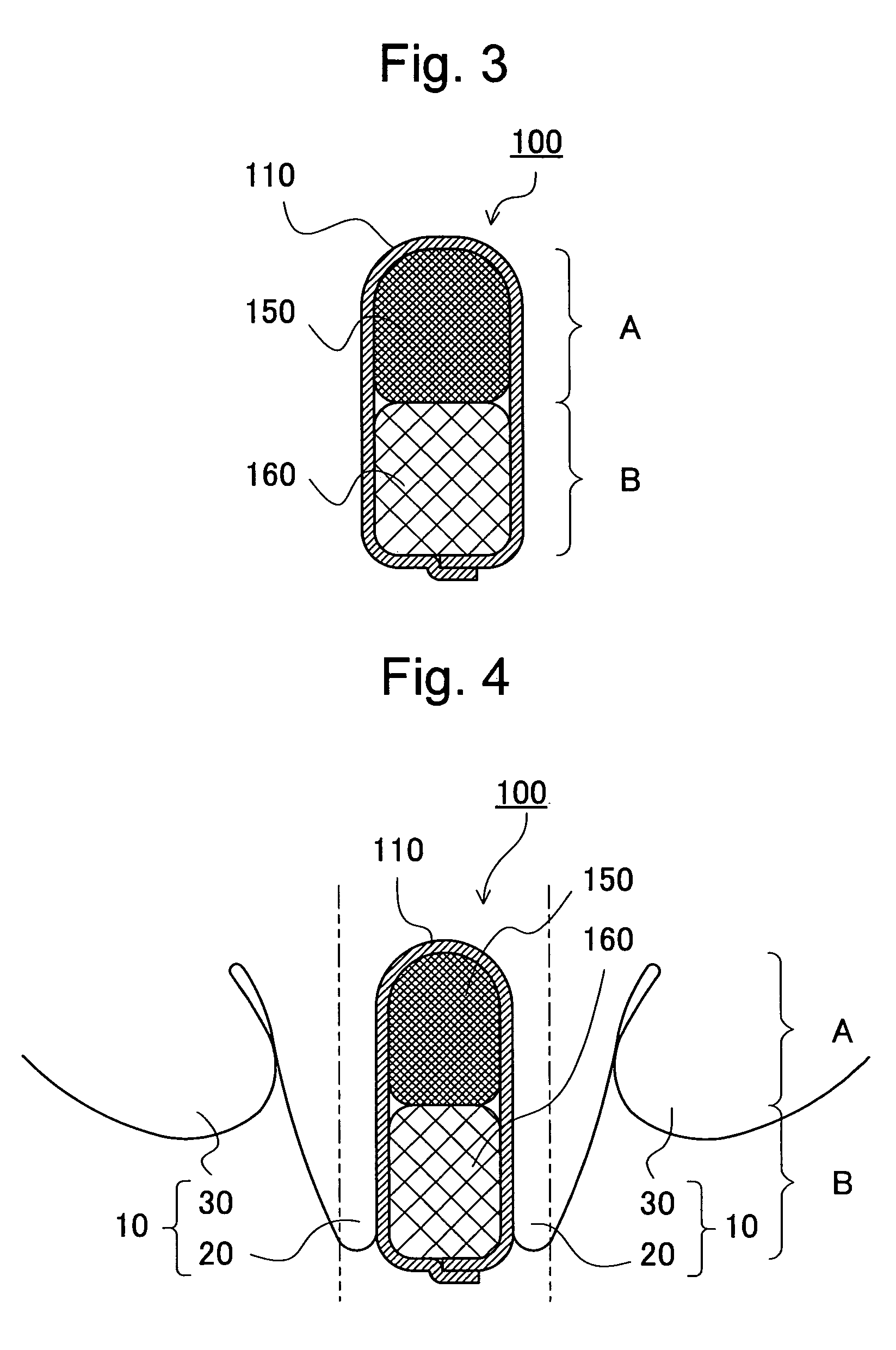Interlabial pad
a technology of interlabial pads and expandable parts, which is applied in the field of interlabial pads, can solve the problems of difficult opening of the labia minora pudenda near the vestibule floor, and achieve the effects of increasing the thickness of the first portion, and increasing the volume of the expandable member
- Summary
- Abstract
- Description
- Claims
- Application Information
AI Technical Summary
Benefits of technology
Problems solved by technology
Method used
Image
Examples
example 1
[0137]An example 1 of an interlabial pad shown in FIG. 3 was formed which has the shape of a rectangular parallelepiped and comprises the absorbent body whose fiber density is higher in the first portion “A” than in the second portion “B”. More specifically, the absorbent body in the first portion “A” and the absorbent body in the second portion “B” were both formed from 100 weight percent pulp having a fiber length of 1 mm to 8 mm. Incidentally, different methods were used for formation of those two portions. In more detail, the absorbent body in the first portion “A” was formed by garnetting so that fibers are opened using an airlaid process, and collected by a suction force so as to allow the fibers to have a specific weight per unit area of 700 g / m2. On the other hand, the absorbent body in the second portion “B” was formed by garnetting so that fibers are opened using the airlaid process and collected by a suction force so as to allow the fibers to have a specific weight per un...
example 2
[0138]An example 2 of an interlabial pad shown in FIG. 6 was formed which has the shape of a rectangular parallelepiped and comprises the absorbent body that is thicker in the first portion “A” than in the second portion “B”. More specifically, the absorbent body in the first portion “A” and the absorbent body in the second portion “B” were both formed from fibers similar to those used in the Example 1. The absorbent bodies in the two portions were both formed by garnetting so that fibers are opened using an airlaid process, and collected by a suction force so as to allow the fibers to have a specific weight per unit area of 700 g / m2. Then, the first portion “A” and the second portion “B” were processed by an embossing treatment that used embossing rolls having different patterns of embossments and different embossed area ratios for the individual portions. That is, the embossed area ratios for the first portion “A” was set to 0.5%, and the embossed area ratios for the second portio...
example 3
[0139]An example 3 of an interlabial pad of the twofold type shown in FIG. 9 was formed so that only an absorbent body in the first portion “A” protrudes toward the backside of the pad, thereby allowing the pad to have a double-layered structure. More specifically, one absorbent body disposed over the interlabial pad was used as an upper absorbent body and the other absorbent body provided only in the first portion “A” and disposed between the upper absorbent body and the backsheet was used as a lower absorbent body. In more detail, the upper absorbent body was formed from fibers, which are made by mixing 85 weight percent rayon having a fiber length of 51 mm, a crimp ratio of 50%, a 0.2 weight percent of hydrophilic oil attached thereto and a fineness of 3.3 dtex, and 15 weight percent natural cotton. The upper absorbent body was formed by garnetting so that fibers are opened using an airlaid process, and collected by a suction force so as to allow the fibers to have a specific wei...
PUM
 Login to View More
Login to View More Abstract
Description
Claims
Application Information
 Login to View More
Login to View More - R&D
- Intellectual Property
- Life Sciences
- Materials
- Tech Scout
- Unparalleled Data Quality
- Higher Quality Content
- 60% Fewer Hallucinations
Browse by: Latest US Patents, China's latest patents, Technical Efficacy Thesaurus, Application Domain, Technology Topic, Popular Technical Reports.
© 2025 PatSnap. All rights reserved.Legal|Privacy policy|Modern Slavery Act Transparency Statement|Sitemap|About US| Contact US: help@patsnap.com



